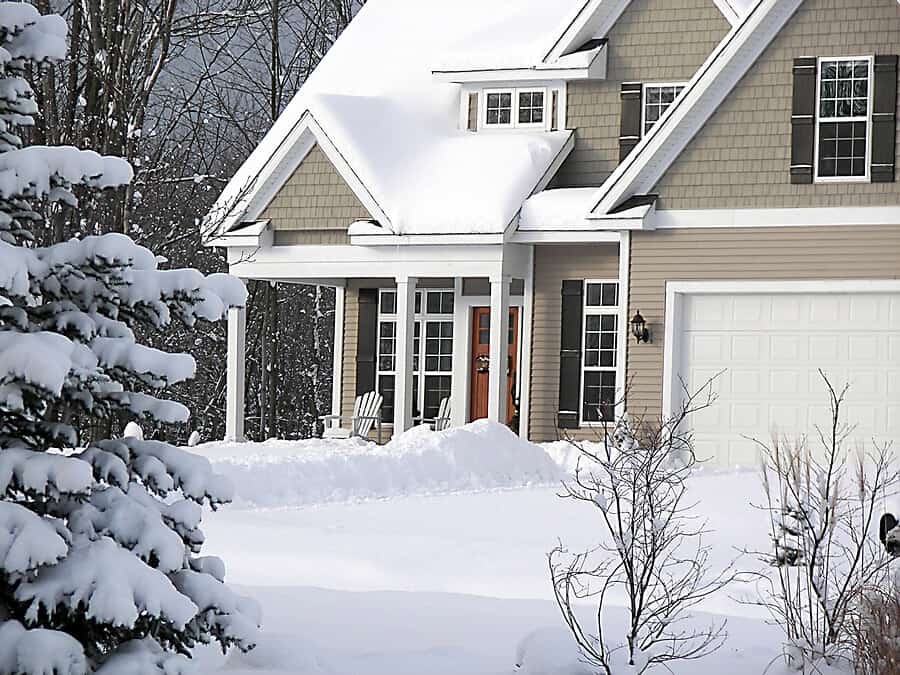If you’ve put off painting the exterior of your house, you may just have to keep putting it off. At least for the next few months. It’s getting frosty outside, and unfortunately, the cold weather can be rough on your exterior paint. In fact, it may be contributing to peeling or discoloration!
What Does Winter Weather Do to Your Exterior Paint?
According to research done by the U.S. Department of Agriculture, interior condensation combined with a cold exterior temperature can cause paint to peel and chip.
The damage comes from two sides. Your family produces water vapor during the day by doing ordinary things like cooking or washing clothes. Because ventilation isn’t as effective in the wintertime, water vapor becomes trapped in the attic and walls. When this water vapor condenses, it can soak into your siding or your outside paint job, causing the paint to peel.
From the outside of your home, snow and ice can linger in the eaves and gutters. As the ice melts, it seeps down, doing even more damage to your exterior paint job. That’s why the paint around your roof line, kitchen, and laundry room tends to deteriorate faster. If the caulk around doors or window frames is damaged, you can have problems in those areas, too.
Exterior Paint Problems Can Be Avoided, Even in Winter
The good news is that exterior paint problems can be avoided, even in cold weather. With proper insulation and moisture barriers, and sufficient ventilation, you can avoid the condensation problem described above. We recommend that you install a solid 6-mil polyethylene vapor barrier in crawl spaces and exterior walls. Also, be sure to properly vent kitchens, bathrooms, and clothes dryers to the outside. This will reduce the amount of moisture that seeps into your paint, and keep your exterior looking nice longer.
Pay Close Attention to Temperature Guidelines When You Paint Your Exterior
If you’ve been wanting to repaint your home, the best thing for you to do during cold weather is wait. Don’t try to replace peeling paint or put a second coat on faded color during the winter.
If you want to be better prepared, check the labels on your paint for recommended temperatures. Generally, the standard minimum is 50 degrees Fahrenheit. However, each brand of paint is different. We recommend that users apply paint only in the recommended range for the best coverage.
What’s the problem with painting in the cold? Unfortunately, it can shorten the paint’s drying time, which can cause poor surface adhesion. This often results in bubbling or cracking on your exterior surface. If your leftover paint freezes, that will damage the product as well. We recommend storing your paint indoors.
If You Need Expert Advice, SNL Painting Inc can Help
If you’d like more expert advice, or if you want to schedule a paint job before this year’s big freeze, contact SNL Painting Inc! We’re happy to help, no matter how low the temps drop outside.



